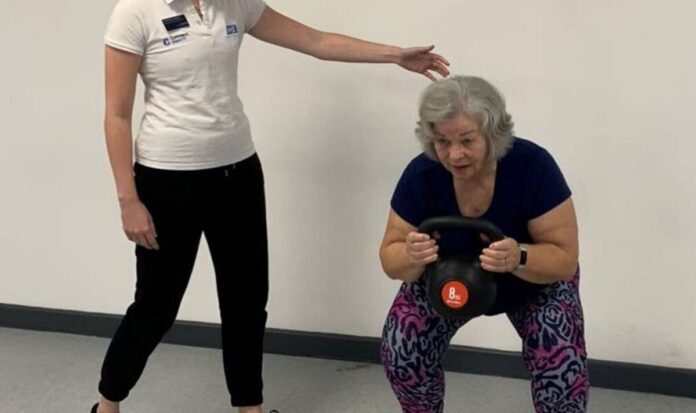On the measures that count, 76-year-old Geraldine Vinall from Milton Keynes had a poor quality of life. She was living with advanced osteoarthritis and chronic pain. Geraldine was labelled “severely disabled” and told her spine was crumbling.Unfortunately for Geraldine, pain was nothing new. The 76-year-old had dealt with neck and back pain throughout her adult life, following polio and a horse-riding accident as a child, and a car crash at age 21, which injured her neck.Diagnosed with advanced and severe osteoarthritis in her cervical spine in her early 30’s, Geraldine struggled with increasing pain, stiffness and immobility, despite regular dog walking and visits to a chiropractor.She attributes the first Covid lockdown to her realisation that she still had a life ahead of her that she wanted to enjoy to the full.”The women on both sides of my family live well into their nineties, and I wanted to be able to plan for the next 15-20 years,’ she explained.READ MORE: Your eyes offer a ‘window’ into how many years you have left to live suggests large study Geraldine’s story: The 76-year-old managed to alleviate her chronic pain though weight training (Image: Getty Images)After weighing up her options, she sought help to manage her pain, and was referred by her GP to community healthcare services provider, Connect Health. She had a phone consultation with one of Connect’s MSK (musculoskeletal) clinicians, Charlotte Hopper.Charlotte said: ‘During that first chat, Geraldine had so much to say – she’s a very bubbly, motivated lady, but she felt she’d been ignored by medical professionals in the past. She’d been told her spine is crumbling, she’d been passed from one person to the next and never offered any real solutions. She needed reassurance about how to manage her pain, and to understand what is going on with her conditions.’The pair began initial one-to-one gym sessions, before Geraldine joined small group classes with other patients, led by Charlotte.New beginningsA gym member for many years, Geraldine had lost confidence and belief that it was the right way for her. Diminishing outcomes had led to lowered expectations, and motivation was becoming harder to sustain. She and Charlotte laughed about “needing WD40 for the joints”.Charlotte explained that “loaded weights and strength training – encourage synovial fluid – Nature’s WD40 – into stiff and painful joints to optimise flexibility and reduce pain”.DON’T MISSHeart attack survivors report same 2 symptoms 1 month before [INSIGHT]Polyuria most ‘common’ diabetes symptom to spot [ADVICE]Four drinks to avoid to reduce blood clot risk [TIPS] Weight training: Regularly exercising with weights is linked to a lower risk of death (Image: Getty Images) Live longer: Top tips to boost longevity (Image: Getty Images)Commenting on Geraldine’s story, Doctor Graeme Wilkes, Chief Medical Officer at Connect Health, said: ‘Resistance exercises using gravity or weights to strengthen muscles are commonly recognised as contributing to musculoskeletal health and recovery from injury, as well as for some in ‘looking good’. What is not well known is that research has found muscle-strengthening activities are independently associated with a variety of improved health outcomes including increasing life expectancy, improvements in heart function and mental health.”The mental and physical wellbeing will reduce pain sensitivity which undoubtedly helped Geraldine and would for many in pain.’Recent data suggests that only 10 to 30 percent of adults meet the muscle-strengthening activity recommendations.”As we get older there is not an age where people should become sedentary – resistance exercises should remain part of life to the grave, providing a better quality of life until that day. This should include whole body resisted exercises, so arms and legs.’As well as older people continuing to resist weights, their friends and families should encourage this and not conspire to reduce such essential wellbeing training. Seeing an elderly person in the gym should be a normal event.’
Woman, 76, makes 20-year life plan after simple exercise boosts health
Sourceexpress.co.uk
RELATED ARTICLES


